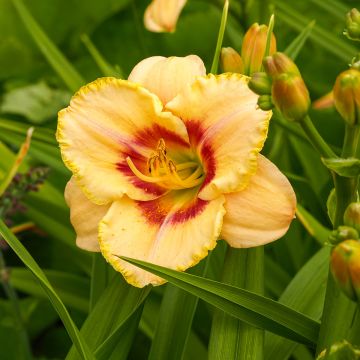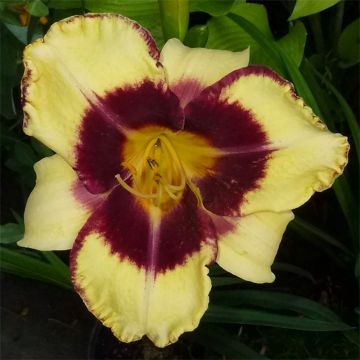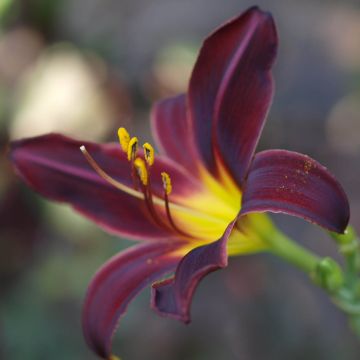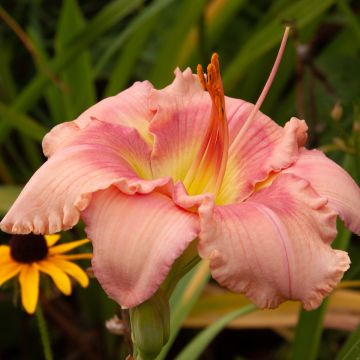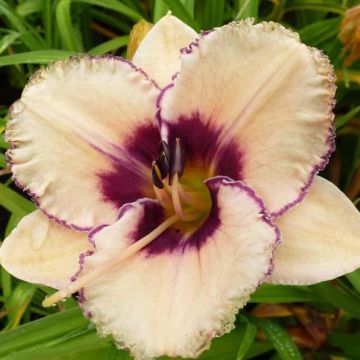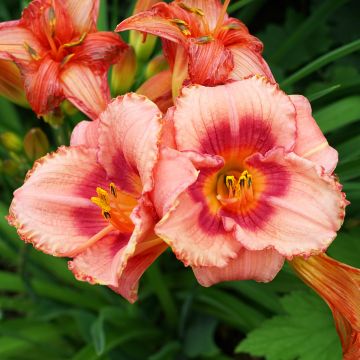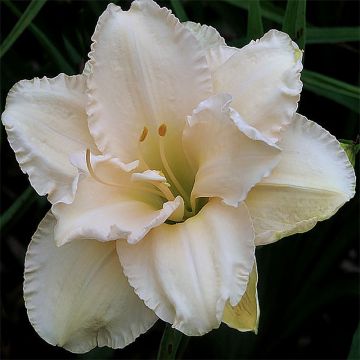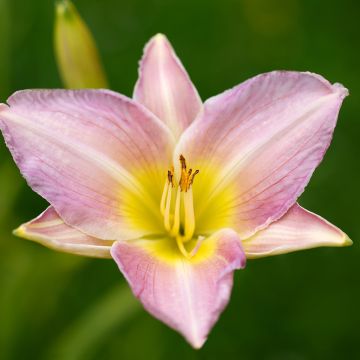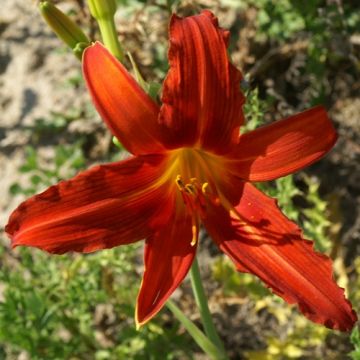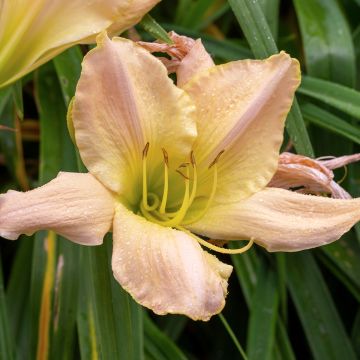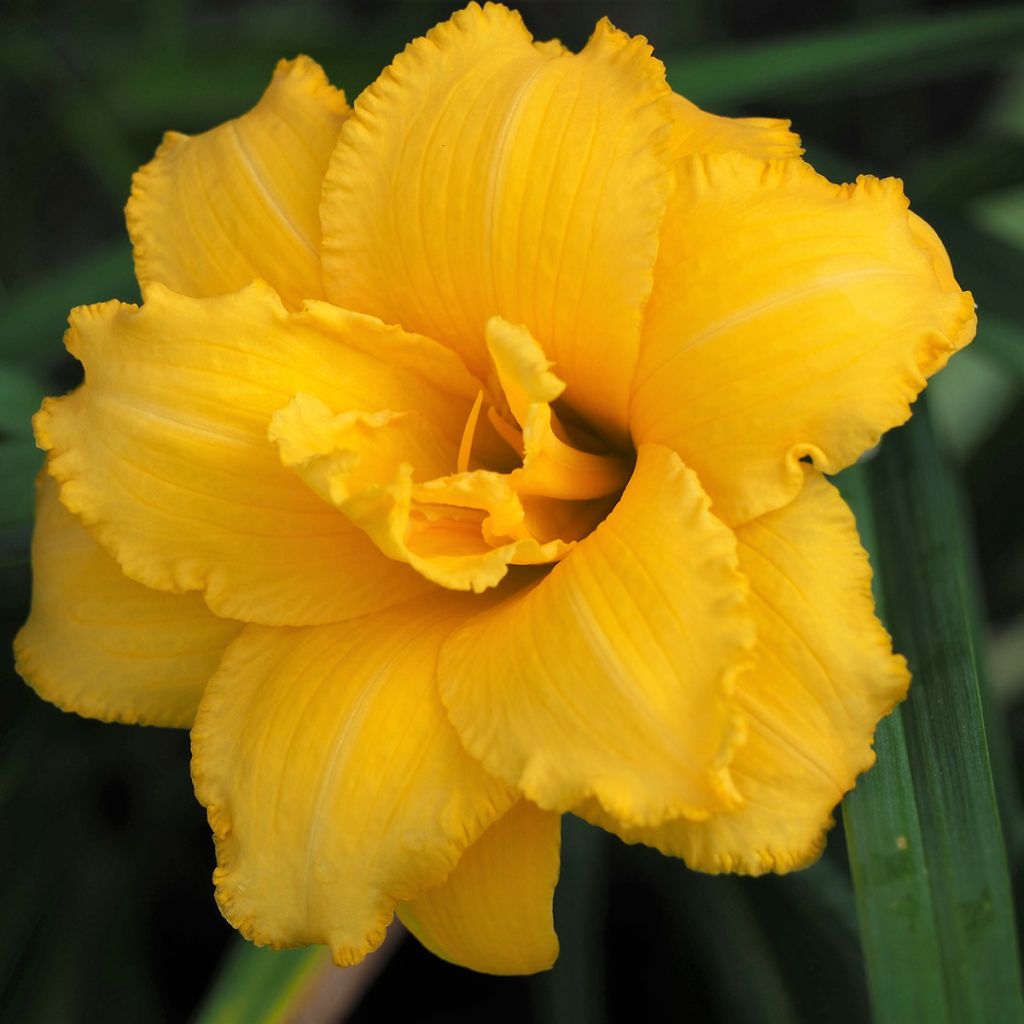

Hemerocallis Condilla - Daylily
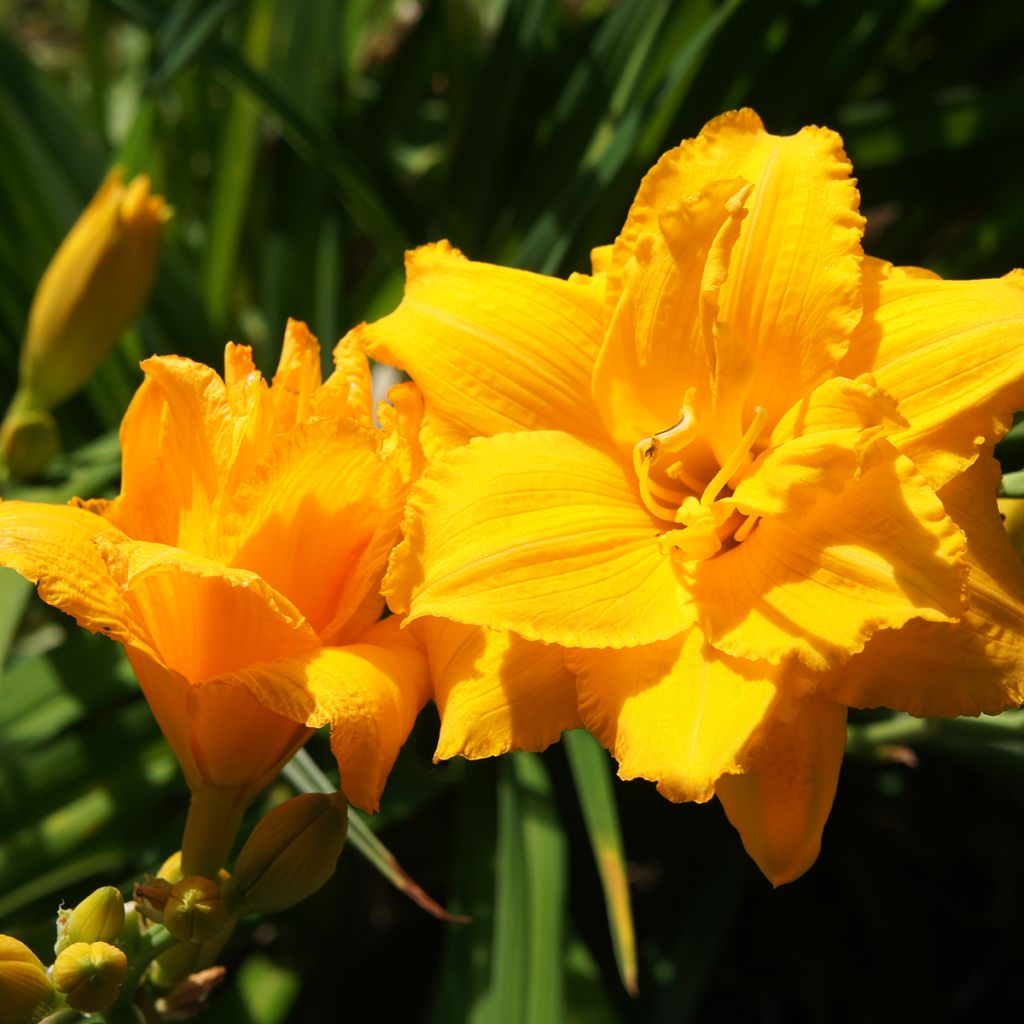

Hemerocallis Condilla - Daylily
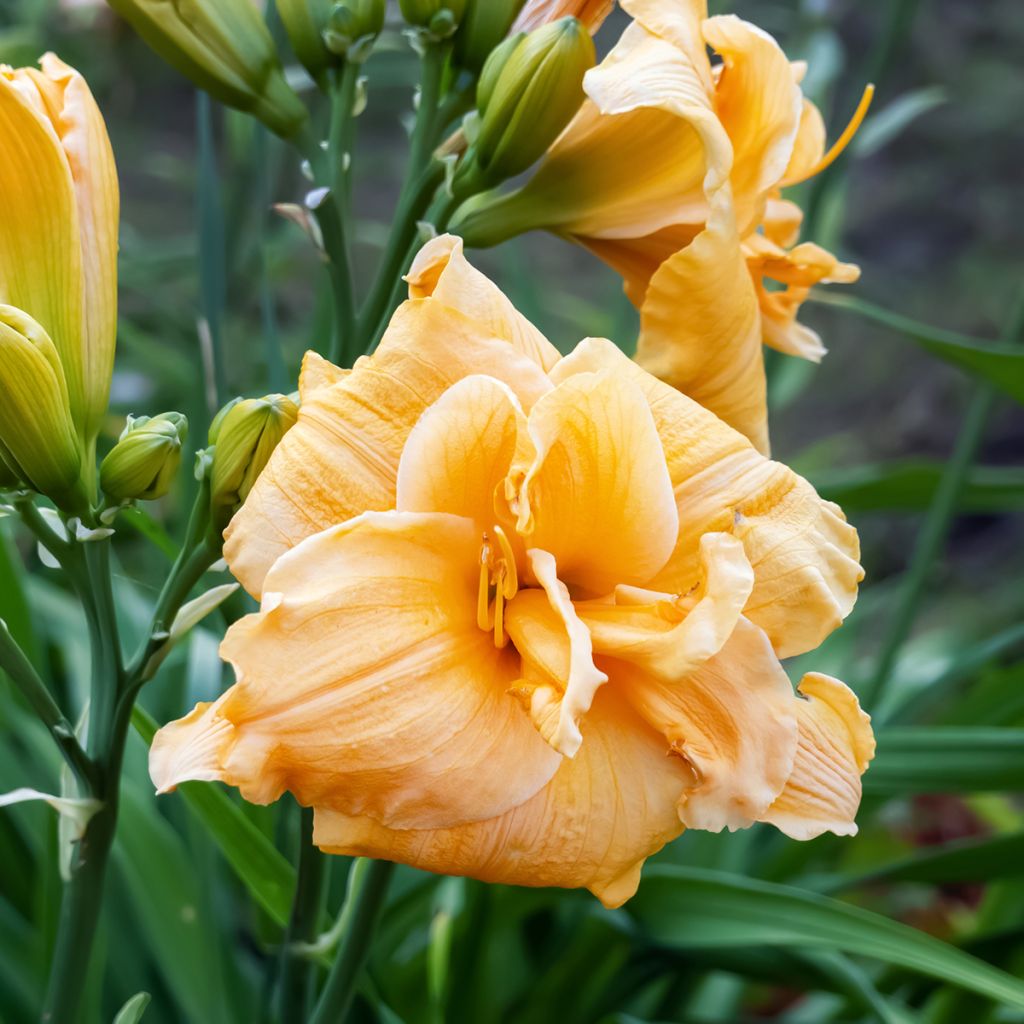

Hemerocallis Condilla - Daylily
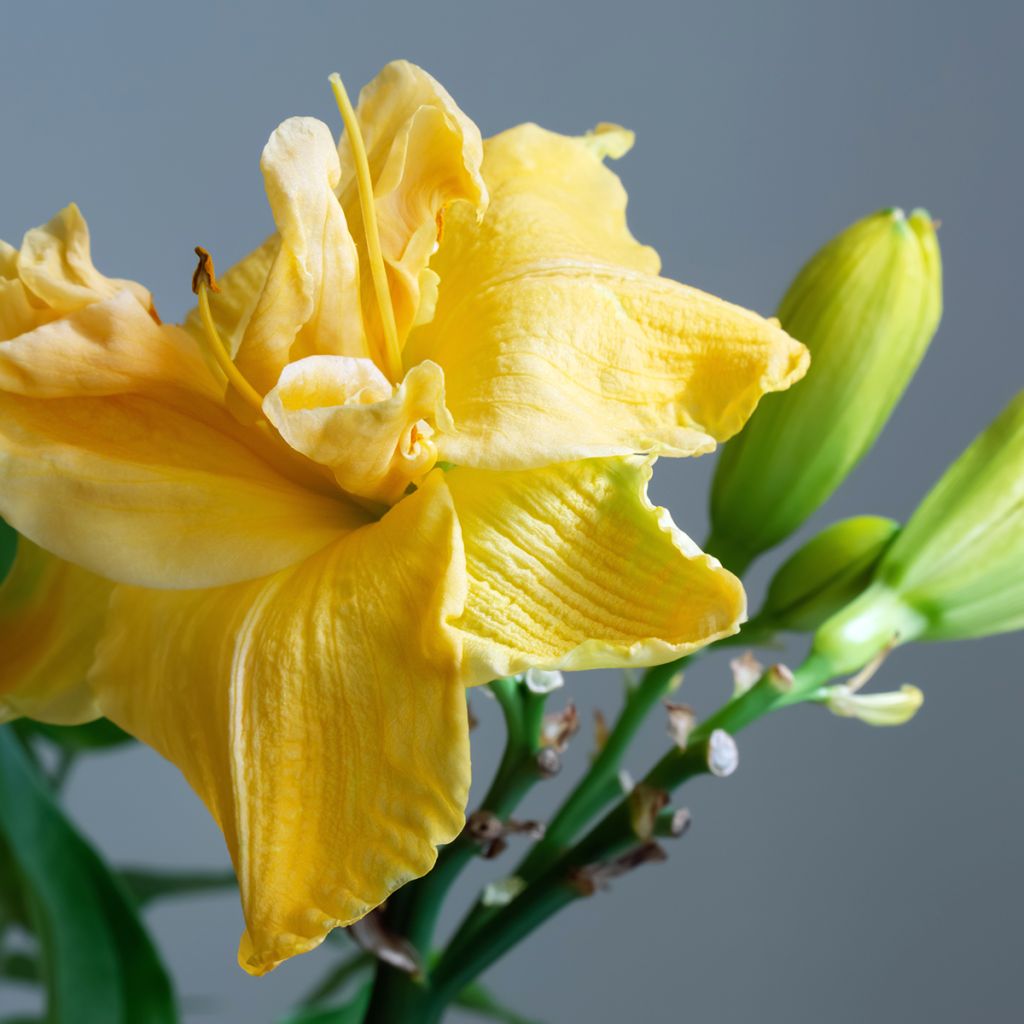

Hemerocallis Condilla - Daylily
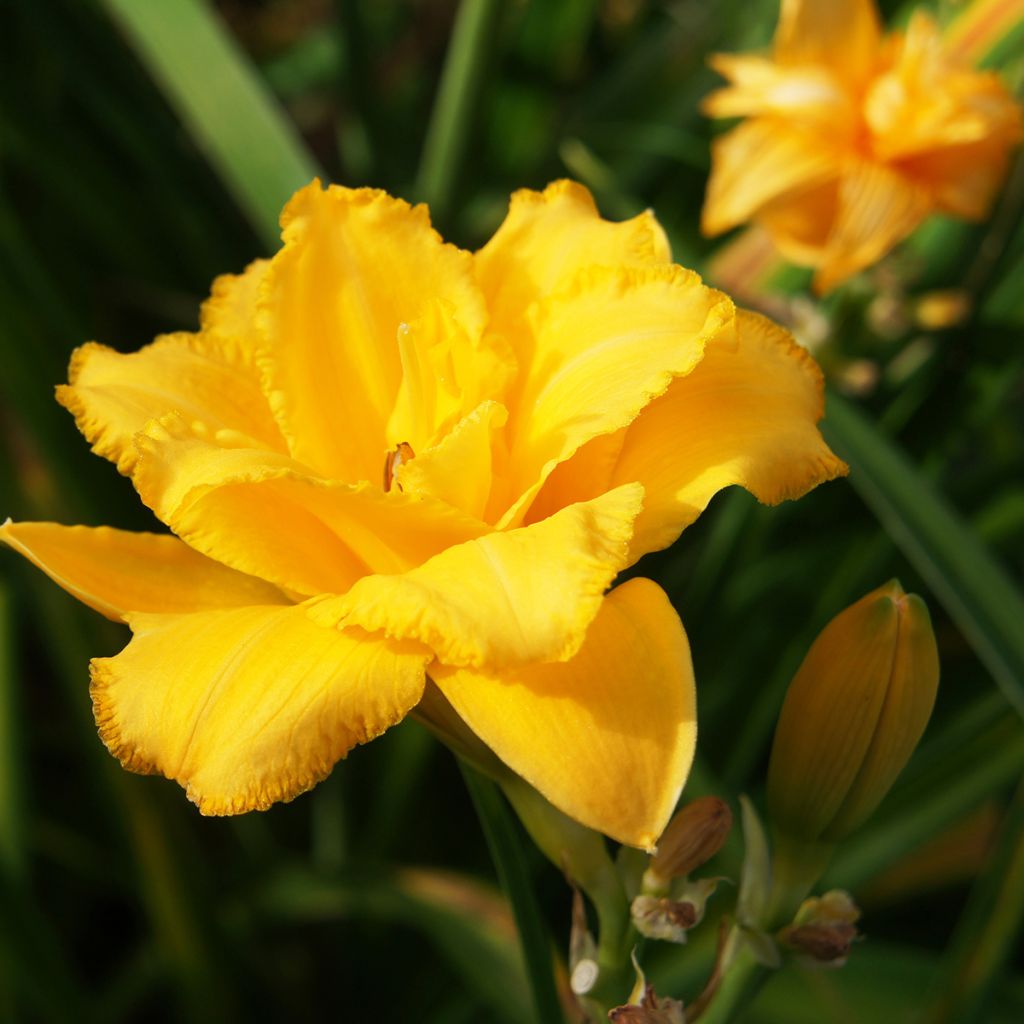

Hemerocallis Condilla - Daylily
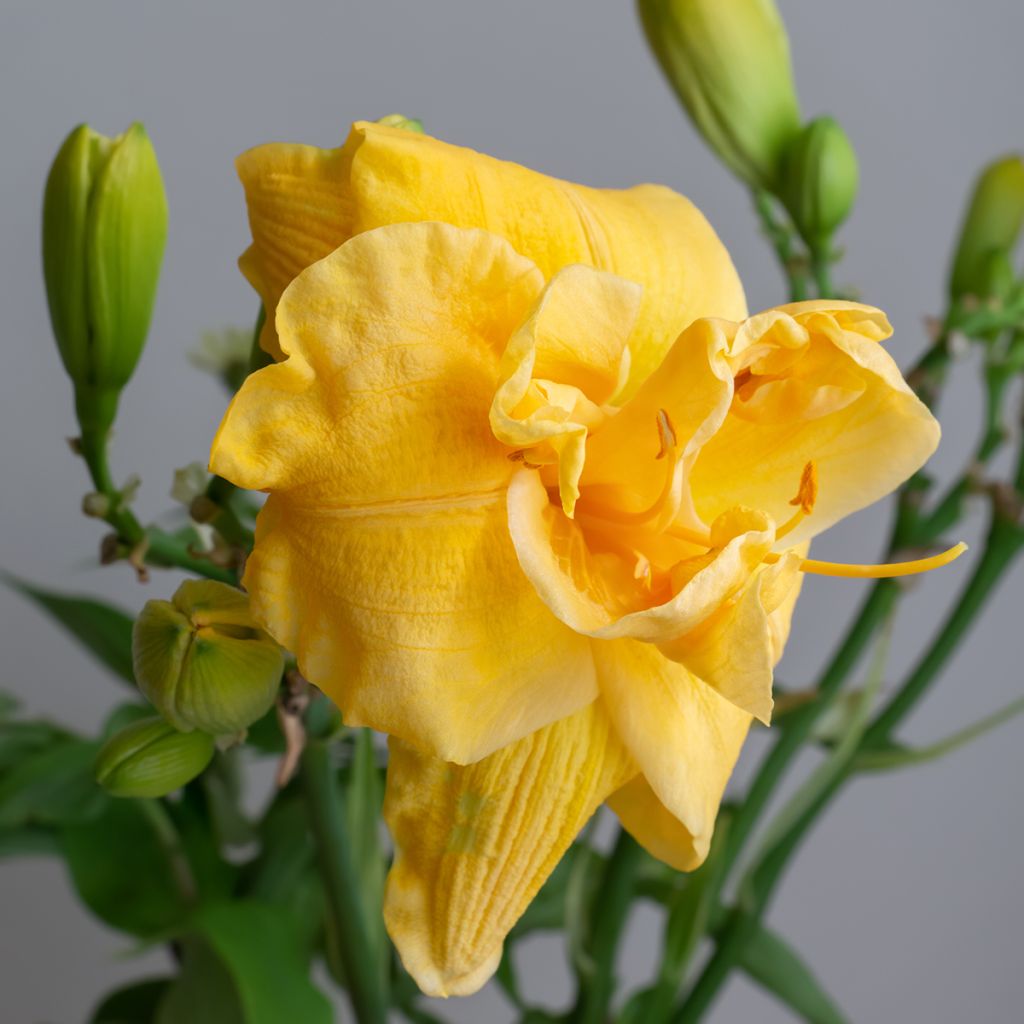

Hemerocallis Condilla - Daylily
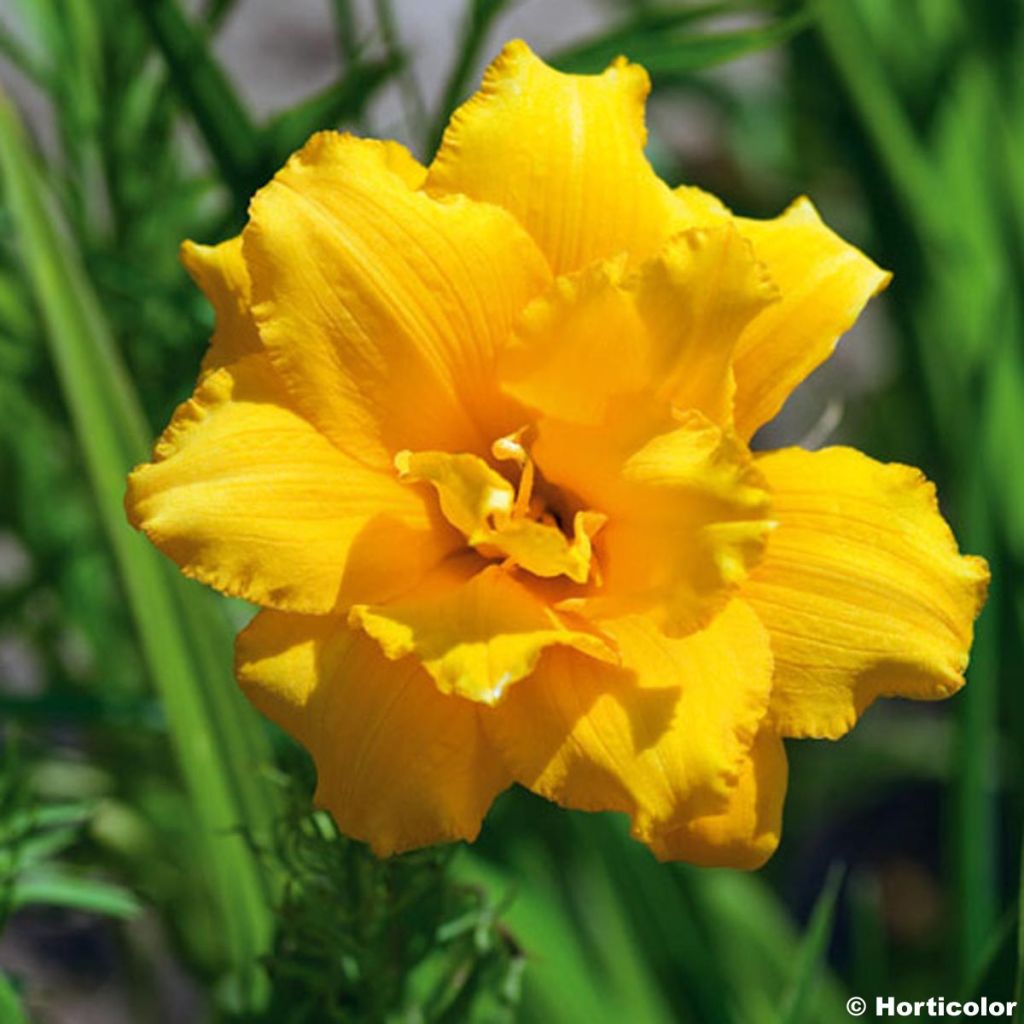

Hemerocallis Condilla - Daylily
Hemerocallis Condilla - Daylily
Hemerocallis Condilla
Daylily
This item cannot be shipped to the selected country
Delivery charge from €5.90
Delivery charge from €5.90
Delivery charge from €5.90
Delivery to Corse prohibited
More information
Schedule delivery date,
and select date in basket
This plant carries a 12 months recovery warranty
More information
We guarantee the quality of our plants for a full growing cycle, and will replace at our expense any plant that fails to recover under normal climatic and planting conditions.
From €5.90 for pickup delivery and €6.90 for home delivery
Express home delivery from €8.90.
From €5.90 for pickup delivery and €6.90 for home delivery
Express home delivery from €8.90.
From €5.90 for pickup delivery and €6.90 for home delivery
Express home delivery from €8.90.
Delivery to Corse prohibited: UE law prohibits the import of this plant from mainland France to Corse as part of the fight against Xylella fastidiosa. Please accept our sincere apologies.
More information

Does this plant fit my garden?
Set up your Plantfit profile →
Description
Hemerocallis Condilla is a must-have for sunny borders and patios. This compact variety produces sumptuous double flowers in a rich golden yellow, with a hint of orange, shining brightly in the summer sun. The plant quickly forms vigorous clumps, with excellent flowering in all regions. Due to its early flowering and sturdy growth, this daylily tolerates heat and summer drought well, making it a good choice for a dry garden or a low maintenance garden.
The genus Hemerocallis belongs to the Liliaceae family. The 'Condilla' variety is a horticultural creation dating back to 1977, diploid, and has been awarded multiple times for its ornamental qualities and robustness. The plant, perennial with fleshy rootstock rhizomes, forms clumps from spring onwards, reaching 45-50 cm (18-20in) in all directions, sometimes even larger over the years. The double, rounded flowers measure 10 cm (4in) in diameter and have a particularly intense dark yellow colour. The petals of this variety appear to be pigmented throughout. They are very wide, thick, fringed, and have a wavy texture. Each flower lasts only a day, but they continuously bloom for a beautiful period between June and July. The flowering occurs at the end of slender stems that tower above abundant, linear, and vibrant green foliage, which is deciduous in winter.
There are few daylily varieties that are more joyful than 'Condilla'! There are numerous horticultural creations derived from the Hemerocallis genus that are wonderful perennial plants for borders, small flower beds, and balconies. The smaller ones (30 cm (12in) tall) can be planted in clumps in a rock garden. The larger ones blend beautifully with other perennials in flower beds. Daylilies are surprisingly underutilized as cut flowers, even though they continue to produce new flowers all summer long, and their buds open in water. All summer bulbs can be planted alongside them. Gladioli find excellent natural support in this dense plant, eliminating the need for staking. The same goes for lilies with their subtle shapes and colours. Dwarf varieties can also be planted on a balcony or patio in large pots or wooden boxes which are at least 30 cm (12in) deep.
The name Hemerocallis comes from the Greek words hemero (a day) and kallo (beauty). It can therefore poetically be called "beauty of a day". Many varieties have been developed in Japan, where it is very popular.
Report an error about the product description
Hemerocallis Condilla - Daylily in pictures
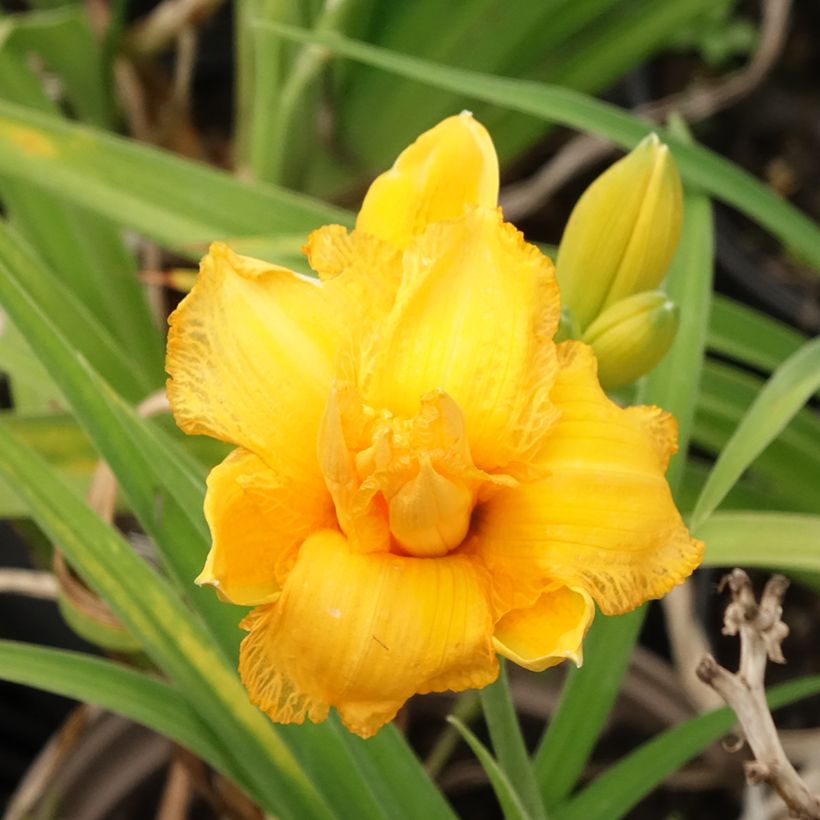

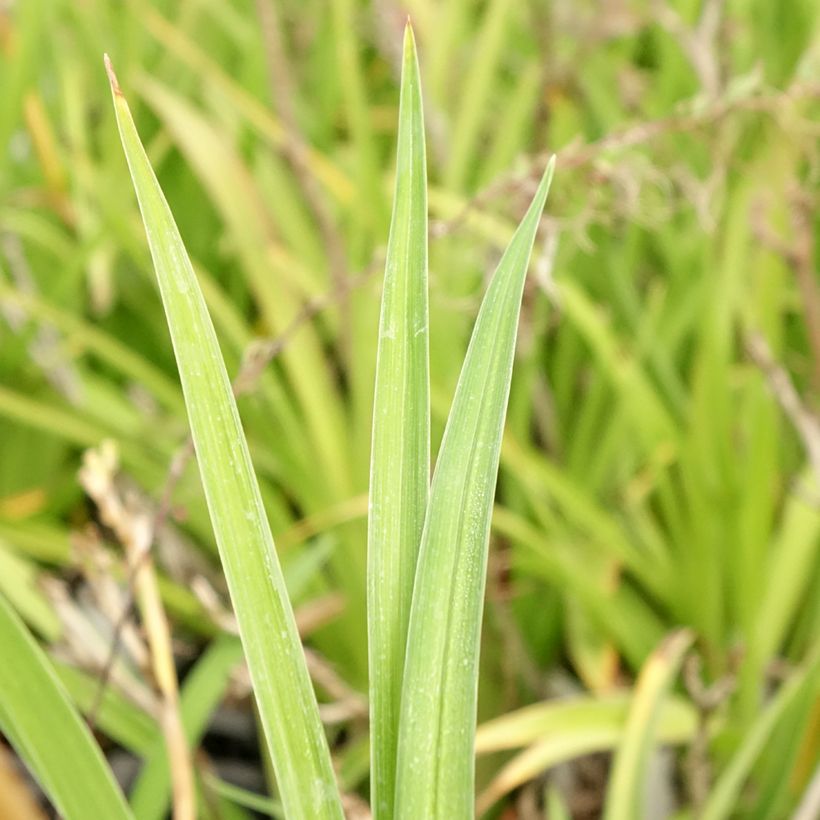

Flowering
Foliage
Plant habit
Botanical data
Hemerocallis
Condilla
Hemerocallidaceae
Daylily
Cultivar or hybrid
Other Hemerocallis - Daylilies
Planting and care
Easy to grow, daylilies 'Condilla' are resistant to parasites and diseases so it is not necessary to treat them. These plants thrive equally well in shade and in the sun: 4 to 5 hours of daily sunlight is sufficient. Plant them in good ordinary garden soil that does not become waterlogged, especially in winter. They will thrive quickly and spread easily. It is preferable to plant them between September and April, burying the collar 3 to 4 cm (1 to 2in) below the surface. It is advisable to place the roots on a small mound of fine, light soil. The average planting distance between two plants is 60 cm (24in). For the first two months after planting, it is good to keep the soil moist. After that, daylilies no longer require any care, except to cut back the faded stems to ground level. Apply a little fertiliser at the beginning of spring. Do not hesitate to divide the clumps every four or five years if your daylily has grown, preferably in autumn, after flowering. The daylily is often called 'the perfect perennial plant' because of its vibrant colours, its ability to tolerate drought, and to thrive in many different climate zones while requiring little maintenance.
Planting period
Intended location
Care
This item has not been reviewed yet - be the first to leave a review about it.
Haven't found what you were looking for?
Hardiness is the lowest winter temperature a plant can endure without suffering serious damage or even dying. However, hardiness is affected by location (a sheltered area, such as a patio), protection (winter cover) and soil type (hardiness is improved by well-drained soil).

Photo Sharing Terms & Conditions
In order to encourage gardeners to interact and share their experiences, Promesse de fleurs offers various media enabling content to be uploaded onto its Site - in particular via the ‘Photo sharing’ module.
The User agrees to refrain from:
- Posting any content that is illegal, prejudicial, insulting, racist, inciteful to hatred, revisionist, contrary to public decency, that infringes on privacy or on the privacy rights of third parties, in particular the publicity rights of persons and goods, intellectual property rights, or the right to privacy.
- Submitting content on behalf of a third party;
- Impersonate the identity of a third party and/or publish any personal information about a third party;
In general, the User undertakes to refrain from any unethical behaviour.
All Content (in particular text, comments, files, images, photos, videos, creative works, etc.), which may be subject to property or intellectual property rights, image or other private rights, shall remain the property of the User, subject to the limited rights granted by the terms of the licence granted by Promesse de fleurs as stated below. Users are at liberty to publish or not to publish such Content on the Site, notably via the ‘Photo Sharing’ facility, and accept that this Content shall be made public and freely accessible, notably on the Internet.
Users further acknowledge, undertake to have ,and guarantee that they hold all necessary rights and permissions to publish such material on the Site, in particular with regard to the legislation in force pertaining to any privacy, property, intellectual property, image, or contractual rights, or rights of any other nature. By publishing such Content on the Site, Users acknowledge accepting full liability as publishers of the Content within the meaning of the law, and grant Promesse de fleurs, free of charge, an inclusive, worldwide licence for the said Content for the entire duration of its publication, including all reproduction, representation, up/downloading, displaying, performing, transmission, and storage rights.
Users also grant permission for their name to be linked to the Content and accept that this link may not always be made available.
By engaging in posting material, Users consent to their Content becoming automatically accessible on the Internet, in particular on other sites and/or blogs and/or web pages of the Promesse de fleurs site, including in particular social pages and the Promesse de fleurs catalogue.
Users may secure the removal of entrusted content free of charge by issuing a simple request via our contact form.
The flowering period indicated on our website applies to countries and regions located in USDA zone 8 (France, the United Kingdom, Ireland, the Netherlands, etc.)
It will vary according to where you live:
- In zones 9 to 10 (Italy, Spain, Greece, etc.), flowering will occur about 2 to 4 weeks earlier.
- In zones 6 to 7 (Germany, Poland, Slovenia, and lower mountainous regions), flowering will be delayed by 2 to 3 weeks.
- In zone 5 (Central Europe, Scandinavia), blooming will be delayed by 3 to 5 weeks.
In temperate climates, pruning of spring-flowering shrubs (forsythia, spireas, etc.) should be done just after flowering.
Pruning of summer-flowering shrubs (Indian Lilac, Perovskia, etc.) can be done in winter or spring.
In cold regions as well as with frost-sensitive plants, avoid pruning too early when severe frosts may still occur.
The planting period indicated on our website applies to countries and regions located in USDA zone 8 (France, United Kingdom, Ireland, Netherlands).
It will vary according to where you live:
- In Mediterranean zones (Marseille, Madrid, Milan, etc.), autumn and winter are the best planting periods.
- In continental zones (Strasbourg, Munich, Vienna, etc.), delay planting by 2 to 3 weeks in spring and bring it forward by 2 to 4 weeks in autumn.
- In mountainous regions (the Alps, Pyrenees, Carpathians, etc.), it is best to plant in late spring (May-June) or late summer (August-September).
The harvesting period indicated on our website applies to countries and regions in USDA zone 8 (France, England, Ireland, the Netherlands).
In colder areas (Scandinavia, Poland, Austria...) fruit and vegetable harvests are likely to be delayed by 3-4 weeks.
In warmer areas (Italy, Spain, Greece, etc.), harvesting will probably take place earlier, depending on weather conditions.
The sowing periods indicated on our website apply to countries and regions within USDA Zone 8 (France, UK, Ireland, Netherlands).
In colder areas (Scandinavia, Poland, Austria...), delay any outdoor sowing by 3-4 weeks, or sow under glass.
In warmer climes (Italy, Spain, Greece, etc.), bring outdoor sowing forward by a few weeks.

































